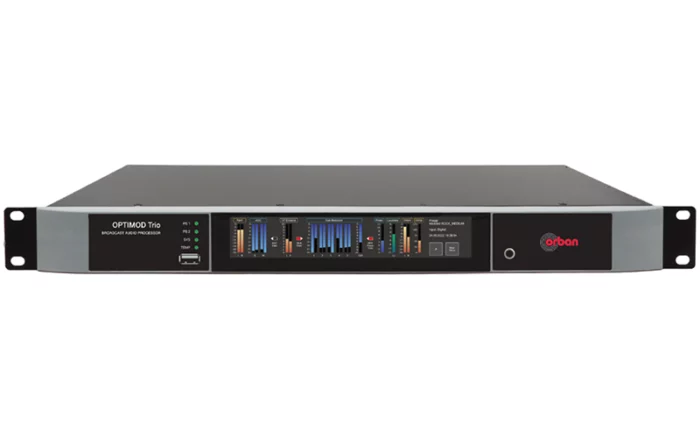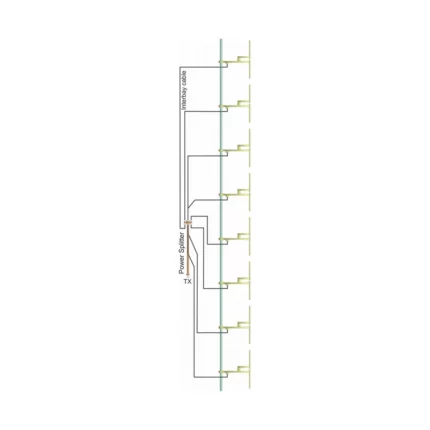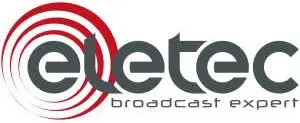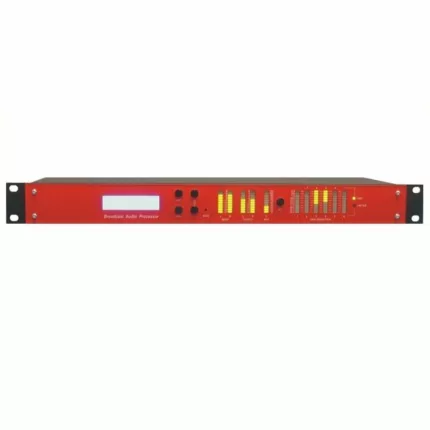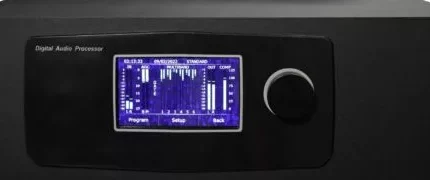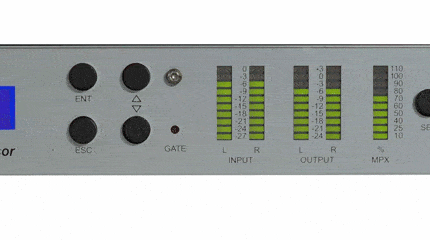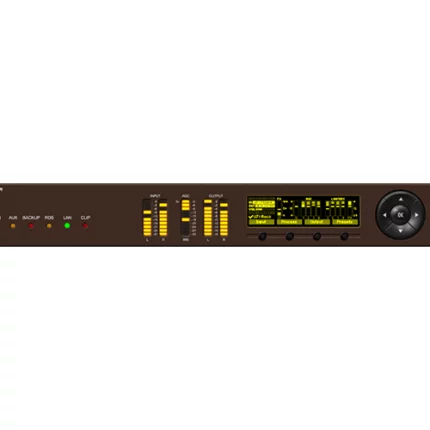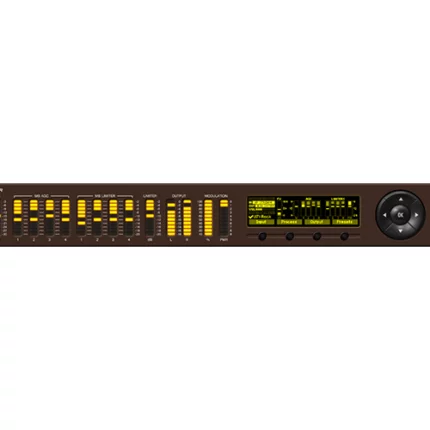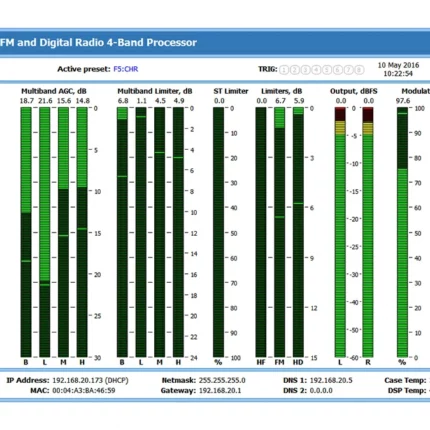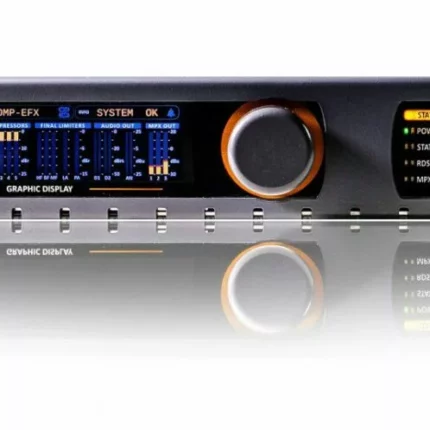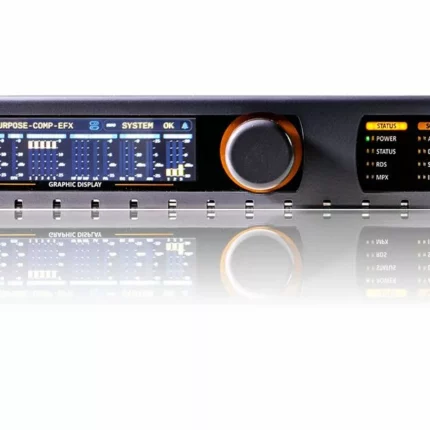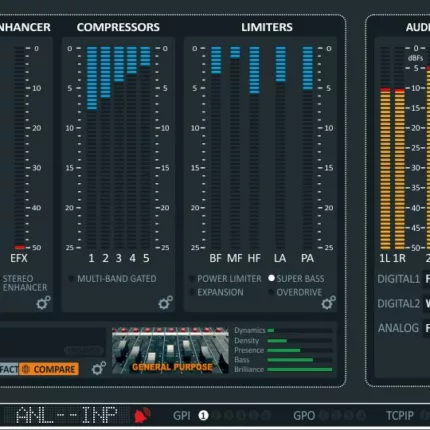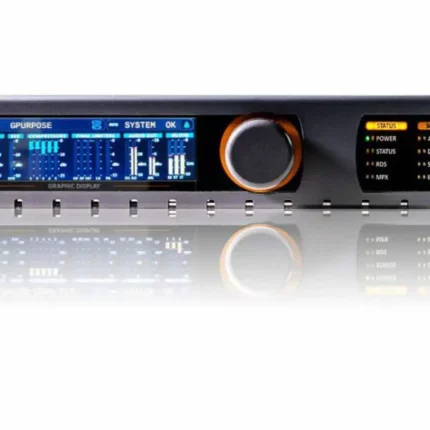Orban Optimod TRIO FM/AM/DAB+ Digital Audio Processor
With the OPTIMOD Trio, you get three audio processors in one box, and you decide which one to use.
Following its big brother the OPTIMOD 5950, the Trio is the second of Orban’s new generation of audio processors. Compact in its design but big in functionality: OPTIMOD Trio can be configured as AM Audio Processor, as FM Processor or alternatively as HD Radio/DAB+/Streaming Processor. In the HD Mode, Trio is even suitable for TV audio processing. No matter if you need to have a flexible backup unit, your requirements for an Audio Processor might change or if you simply want your audio to sound the best it
can, OPTIMOD Trio does the job.
Orban Optimod TRIO FM/AM/DAB+ Radio Audio Processor
With the OPTIMOD Trio, you get three audio processors in one box, and you decide which one to use.
Following its big brother the OPTIMOD 5950, the Trio is the second of Orban’s new generation of audio processors. Compact in its design but big in functionality: OPTIMOD Trio can be configured as AM Audio Processor, as FM Processor or alternatively as HD Radio/DAB+/Streaming Processor. In the HD Mode, Trio is even suitable for TV audio processing. No matter if you need to have a flexible backup unit, your requirements for an Audio Processor might change or if you simply want your audio to sound the best it
can, OPTIMOD Trio does the job.
Key Features:
AM Operating Mode: With OPTIMOD Trio you can achieve the highest possible quality in AM shortwave, medium wave and long
wave broadcast sound. It increases the density and loudness of the program material by multiband limiting and multiband
distortion-canceling clipping, improving the consistency of the station’s sound and increasing loudness and definition without
producing audible side effects.
OPTIMOD Trio compensates for the high- and low-frequency roll-off of typical AM receivers
with a fully adjustable program equalizer, providing up to 20dB of high-frequency boost (at 5 kHz) without producing the side effects
encountered in conventional processors.
FM Operating Mode: OPTIMOD Trio provides four FM processing structures that are Five-Band, Low-Latency Five-Band, Ultra-Low-
Latency Five-Band and Two-Band. Additionally, it can be also used as stand-alone Stereo Encoder with latency as low as 2 ms and full
overshoot limiting in both the left/right and composite baseband domains.
For countries requiring the multiplex power to be constrained to a specified limit, the ITU BS.412 Multiplex Power Control can be activated to ensure compliance while controlling
MPX power smoothly and reliably.
An onboard RDS/RBDS generator supports dynamic PS scrolling and IP access. The
optional μMPX Interface allows you to transmit DMPX over IP if you are using the FM operating mode.
HD Operating Mode: You can choose between the Five-Band processing structure for a spectrally consistent sound with good
loudness control and the Two-Band processing structure for a transparent sound that preserves the frequency balance of the
original program material while also effectively controlling subjective loudness.
The “True Peak” limiter anticipates and controls peak levels following D/A conversion, a feature now required by many broadcasters.
With our PreCode™ technology, several aspects of the audio can be manipulated to minimize artefacts caused by low bitrate codecs often used in DAB+.
Factory Presets: Like all OPTIMODs, Trio also comes with a variety of factory presets; Orban’s exclusive “Less-More” control
simplifies creating your own signature sound.
AES67/SMPTE ST-2110: Trio provides an Ethernet network interface for Audio-over-IP connections supporting Dante, AES67
and SMPTE ST-2110.
Remote Control/Monitoring: OPTIMOD Trio can be configured
and controlled via any HTML5 web browser. It also supports the
SNMP v2 protocol and in a later release Ember+ will be added.
ITU-R BS.1770-4 Loudness Control facilitates compliance with
modern target loudness recommendations like EBU R 128.
Silence Detection: A programmable silence detector is available
for the analog, digital and AoIP inputs. It can generate alarms and
allows automatic switching to a backup input/input audio storage.
Optional Streaming Monitor Output: The processed signal can
be monitored remotely via IP, allowing processor adjustment in
locations where a clean off-air signal is unavailable.
Optional internal Storage for Audio Backup: A 2 GB Flash
Memory provides two hours linear or twelve hours AAC, MP3 or
OPUS encoded Audio.
Optional internet Streaming Decoder: This feature can be used
as a backup audio source received via Audio-over-IP.
Audience Measurement: An internal Watermarking Encoder can
optionally be added (Kantar, Nielsen or IPSOS).
Optional Dual Power Supplies: OPTIMOD Trio can optionally be
equipped with monitored dual-redundant power supplies.
Audio Input Channels:
1 x stereo analog
2 x stereo digital AES3
2 x stereo AoIP
Audio Output Channels:
1 x stereo analog
2 x analog MPX/composite
2 x stereo digital AES3 or 1 x stereo
digital AES3 and 1 x DMPX
(configurable)
2 x stereo AoIP
1 x headphone output (for monitoring)
Optional 1 x μMPX (DMPX over IP)
SCA Inputs:
2 x Synchronisation: 10 MHz clock input
AES11 sync input
19 kHz pilot tone reference output
GPIOs:
8 x inputs,
2 x outputs
Latency: 4 – 22 msec (depending on the
processing structure)
Low-latency AES Output: 3 – 8 msec
IP Network: 1 x RJ45 Ethernet Management
1 x RJ45 for AoIP


